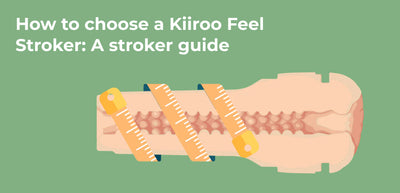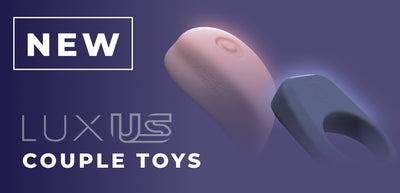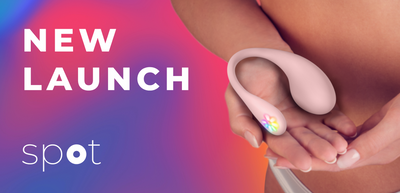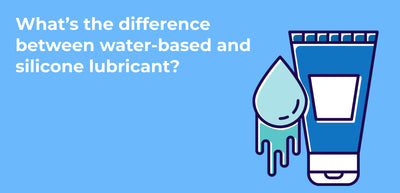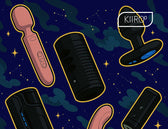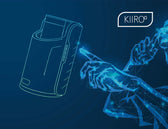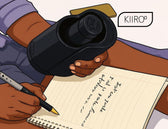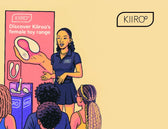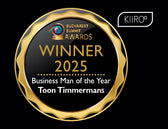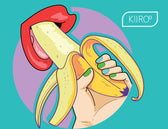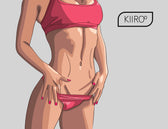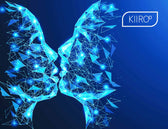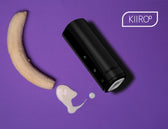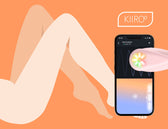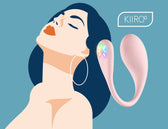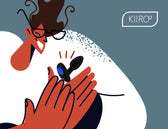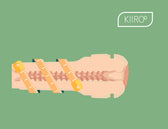A Look at Trends in 2017
In our last segment of ‘What’s Gaying On?’ we took the time to address some exciting moments in lesbian culture and various ways you could get involved. But we’d be remiss if we didn’t expand to look at other elements of queer culture too, and so here we are looking to explicitly gay contributions to the arts and other forms of media.
2017 has arguably been an incredibly eventful year for gay culture and, more specifically, gay awareness and visibility. As we mentioned in our last article, the Oscar success of Moonlight highlights the prominence that queer (and intersectional) contributions can provide to the wider world. But how is this reflected generally right now? Well, let’s find out!
Things To Read about Recent Gay Culture
If you fancy yourself to be a fan of the classical then there’s always Gore Vidal’s The City and the Pillar or James Baldwin’s Giovanni’s Room to casually peruse, but there have also been some recent greats and some exciting upcoming works too.
A recent must-have for most younger gay individuals is The Gay Gospel: A Survival Guide for Gay 20Somethings in America Today. This book delves into the ins and outs of gay culture and being gay in one’s ’20s.
However, this book also has many relatable points which will speak to pretty much most homosexual individuals. Its cover also brings the appropriate level of color and identity to the topic of negotiating one’s own homosexuality.
If, on the other hand, you’re a bit of a humanities-buff and wanted something a bit more general then Valerie Traub‘s Thinking Sex With the Early Moderns may just be the read for you.
Though not solely focused on homosexuality, this book explored the many ways that the early moderns explored sex and sexuality—giving a solid basis to any debate where you need to debunk the apparent permanency of current conservative norms. A true ally in the fight against sexual ignorance.
And if autobiographies are your deal then you’ve got a solid read to look forward to unpicking with Rich Merritt’s Secrets of a Gay Marine Porn Star. This publication tells the story of Rich Merritt, also known as ‘The Marine Who Did Gay Porn’ by The Advocate.
Except, this time he gets to tell his own story in intricate detail. A must for anyone who wants to understand the prejudices that many gay individuals still face.
For those shorter reads these articles also offer some incredibly compelling viewpoints:
Gay in Ballet: Two Men Defying Traditions in the Dance World by R. Kurt Osenlund
Gay Personal Trainer Uses New Passion To Break Down Barriers With Straight Men by Michael Pavano
Why Cishet Black Men Calling Out “Black Gay Privilege is Counterproductive by Alfonso Francois
Things To Watch
Moonlight is the obvious one here, so we’re just going to give it the proper respect straight from the get-go and then move on to look at other gay representations.
And who can ignore the most recent buzz from Disney and the new Beauty and the Beast live-action film?
Disney faced an outlandish amount of backlash when they declared that one of the characters would be openly gay. Never mind that it was heavily implied in the subtext of the animated movie too. What? LeFou is gay? No shit!
Who would have guessed that the guy leading a pub sing-along about how great the man he follows around all day has an inclination towards burly men? It’s unthinkable!
All sarcasm aside, it’s great to see Disney move towards more open representations of LGBTQ culture, and even better to see them actively defending it when confronted with censors.
Meanwhile in the UK co-creator of the popular TV-series, Sherlock, has taken on a new project—a BBC Four series intended to chart a century of ‘the UK gay experience’. With a brilliant track record for creating exceptional content, this series looks sure to be unmissable for anyone with an interest in Britain’s gay history.
If, however, you’re more of a reality TV show then you may be happy to hear that E! is releasing a series documenting life in L.A.’s most prestigious ay bar, The Abbey. What can you expect from this series? Oh, I think you can already make some guesses.
Things To Attend
One of the great things about being queer in 2017 is the sense of unity that is constantly being fostered to counter any attempts at hatred. Put simply, we just won’t allow it nowadays, and we’re not silent about that fact.
This means that there are a lot of huge and wonderful Pride events that are primed for attendance in 2017. Here are just a few of note:
NYC Pride Island 23-25 June
San Francisco Pride 24-25 June
Pride in London 24 June-9 July
This is my Pride, Amsterdam 29 July-6 August
Time to get jet setting!
Before you go attend one of these, we got to tell you how the pride started.
The Beginning of Gay Pride
Every year, hundreds of thousands of LGBTQ people take to the streets in cities all over the world for LGBTQ Pride. In some places, equal rights have been achieved and Pride is mainly a large celebration.
In many other places, LGBTQ people still deal with oppression and hate crimes, and the Pride parade offers a platform for people to stand together to fight for LGBTQ rights. But where did Gay Pride originate, and how has it developed over the years?
The Stonewall Demonstrations
In 1970, the very first Gay Pride parade took place in New York City. It was a commemoration of the Stonewall Demonstrations that erupted in New York on June 28 1969. These demonstrations were sparked by a police raid of the Stonewall Inn, a gay bar on Christopher Street in New York’s Greenwich Village.
After the incident, the last Saturday in the month of June would be called the Christopher Street Liberation Day where people would be able to demonstrate in order to commemorate the incident.
The lesbian, gay, bisexual, and transgender patrons of the bar stood together to resist the police. They had had more than enough of the frequent police harassment, raids and the deeply entrenched homophobia.
That night of rioting inspired LGBTQ people all across the country to fight for their rights. Black trans activist Marsha P. Johnson is said to be one of the first people to have fought back in the clashes with the police during that first night of riots.
Sylvia Rivera, of Puerto Rican and Venezuelan descent, worked as a trans rights and gay rights activist and drag queen in New York at the time. She was one of the first people to take action by throwing a bottle at the police.

Towards the First Gay Pride March
The first New York Gay Pride march in 1970 was largely conceived and organized by gay rights activist Craig L. Rodwell. The march was much more a protest than a celebration, with marchers carrying signs and calling out chants. That same weekend, gay activist groups on the West Coast held marches in LA and in San Francisco, and a march was held in Chicago.
The following year, Gay Pride parades also took place in Boston, Dallas, San Jose, and Milwaukee in the United States, and European cities like London, West-Berlin, Paris, and Stockholm followed as well.
A Worldwide Phenomenon
At first, the LGBT Pride in the United States was celebrated on the first Saturday of June, commemorating that June in 1969 where it all began. Over time, that day has grown into several weeks of celebrations and events for the LGBT community in the month of June.
Also, different states and cities now have their own Pride parade dates. The biggest LGBTQ Pride events today are held in New York City, San Francisco, Montreal, London, Sydney, Berlin, Amsterdam, Madrid, Tel Aviv, Sao Paulo, and Buenos Aires. Different countries, different states, and even different cities celebrate Pride on a date of their choice.
Most countries celebrate Pride in June, or during a different summer month, paying tribute to that very first Pride parade in New York. Celebrating LGBT Pride month in the summer is also convenient because the event is held outside.
The Rainbow Flag
Also known as the gay pride flag or LGBT pride flag, originated in San Francisco in 1978. It was created by the artist Gilbert Baker. The rainbow flag was first displayed at the San Francisco Freedom Day Parade that same year.
The flag originally was designed with 8 colored stripes; hot pink, red, orange, yellow, green, turquoise, indigo, and violet, all in that order. The rainbow colors represent social equality and individuality. Each color symbolized sex, life, healing, sunlight, nature, magic, serenity and spirit.
Since then, the rainbow flag has been used in different countries and sparked creations for other flags within the LGBTQ community.
Pride in The Netherlands
In The Netherlands, the first equivalent to Gay Pride occurred in 1977. Since 1979, it is called Roze Zaterdag (Pink Saturday), as it takes place on the last Saturday in June every year.
Amsterdam Gay Pride is a separate event, which has been taking place every August since 1996, and which is centered around the Canal Parade. Amsterdam Pride celebrations started out purely as a fun event to celebrate the freedom and diversity of LGBTQ people. In recent years, it has also taken on a more political and emancipatory character since it is often regarded as the equivalent to LGBTQ Prides worldwide.
The Canal Parade is one of the most famous Pride parades, due to its extravagantly decorated floats sailing through the Amsterdam canals. In 2014, the first Jewish boat and the first Moroccan boat participated in the Amsterdam Canal Pride.

The Origins of the Name
In reality, those first Stonewall riots in 1969 were attended by lesbians, transgender people, gay men, and bisexual people of all different races and backgrounds.
However, Pride was initially just called Gay Pride. The word ‘gay’, at the time when the first parades were organized, was commonly used to refer to the entire spectrum of what is now often called the ‘queer’ or LGBTQ community.
Over the years, our language has become more inclusive and accurate, and Gay Pride changed its name. First, it became Lesbian and Gay Pride, and now, it is mostly referred to as LGBT/LGBTQ Pride, or simply Pride.
The Importance of Pride Today
We have come a long way since the discrimination, sexism, and hate crimes against LGBTQ people that led to the first Pride in New York City. However, LGBTQ people remain targeted and oppressed in many places today.
In countries where governments and the majority of the population are unsupportive of LGBTQ people, Pride marches still act as a platform where people can show solidarity and support.
Pride gives LGBTQ people worldwide an opportunity to celebrate, to be themselves, and to feel empowered. It allows people to keep fighting for equal rights and to take a public stance against anti-LGBTQ laws and actions.
From Christopher Street in 1960s New York City to Amsterdam’s canals today, Pride has evolved and spread out across the world. While every country and every city has its own kind of parade, the essence of Pride remains the same everywhere. It is a celebration of LGBTQ people, and a solidarity march to advocate social change.
Kiiroo has products to suit everyone, including strokers, vibrators & butt plugs.
Written by:
Mindy Cordova
and
Dr. Emmeline Peaches
Follow Emmeline on Twitter
Similar articles:
10 Things Not To Do at Gay Pride Parade
